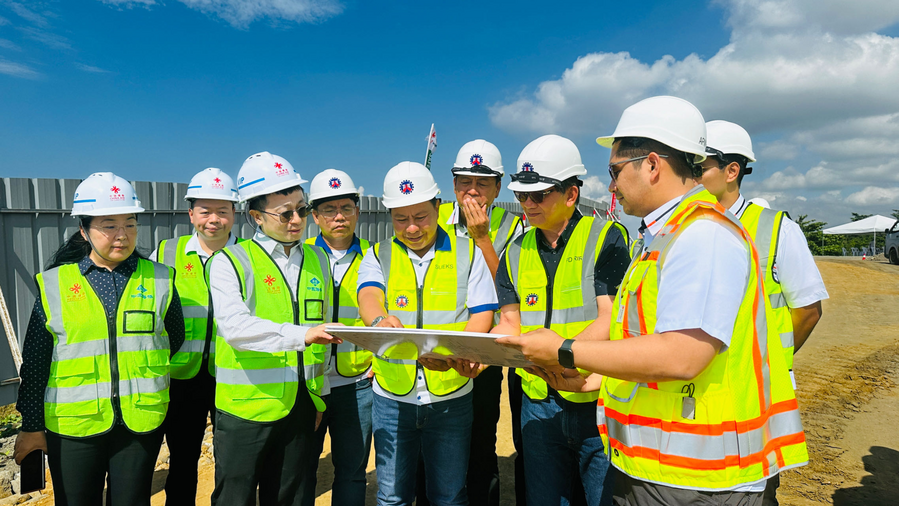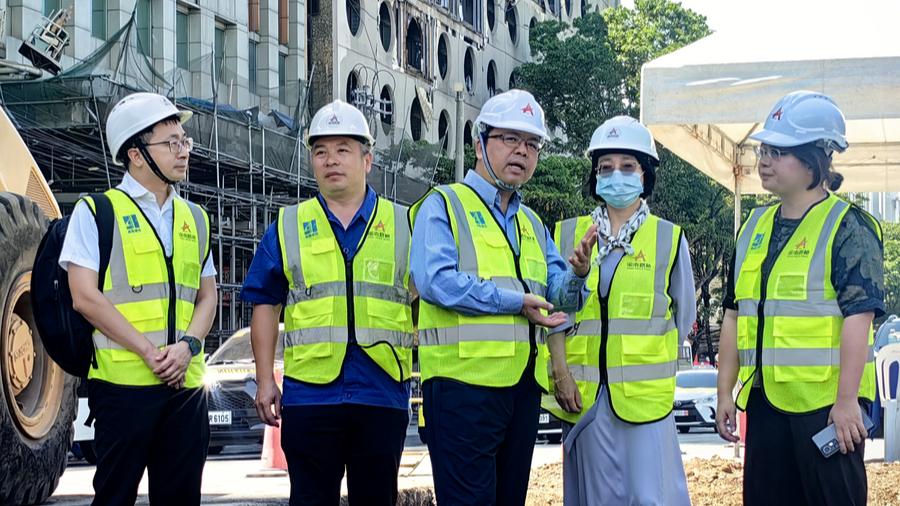On the eve of the International Labor Day, Chinese Ambassador to the Philippines Huang Xilian (C) visits the Cebu Bus Rapid Transit project undertaken by the China-based Hunan Road and Bridge Construction Group Co. Ltd. (Chinese embassy in the Philippines/Handout via Xinhua)
In recent years, Chinese enterprises have undertaken a wide range of projects in the Philippines, jointly improving local infrastructure with the Philippine side and greatly benefiting Filipinos.
by Xinhua writer Zhang Yisheng
MANILA, May 1 (Xinhua) -- On the eve of the International Labor Day, Chinese Ambassador to the Philippines Huang Xilian visited Chinese companies in the archipelago country amid the scorching heat.
Due to the El Nino weather phenomenon, the South Asian country has been sweltering in recent weeks under baking hot temperatures. Despite that, Huang led a working group to the Cebu Bus Rapid Transit project undertaken by the China-based Hunan Road and Bridge Construction Group Co. Ltd.
As one of the Philippine government's flagship infrastructure projects, the program, located at the heart of Cebu City in the central Philippines, aims to provide more efficient, reliable, comfortable and safer public transportation for both locals and visitors.
At the construction site, Huang asked about the progress, safety management, technical quality and other information. He also had a cordial conversation with Chinese and Philippine employees on site.
Following Huang's example, other Chinese diplomats in the Philippines have also visited other Chinese-funded projects under construction around the country.
Some went to Davao City in the southern Philippines to see the construction of the Davao River Bridge, also known as the Bucana Bridge.
In 2023, the Philippine Department of Public Works and Highways signed a contract with China Road and Bridge Corporation for the construction of the bridge.
The project involves a four-lane bridge and approaches with a total length of 1,340-linear meters. Once completed, the bridge will complement the city's coastal roads, and thus improve the local transportation network.
On the eve of the International Labor Day, Chinese diplomats in the Philippines visit the Davao River Bridge in Davao City. (Chinese embassy in the Philippines/Handout via Xinhua)
Also in Davao, the construction of the two-way, four-lane Samal Island-Davao City Connector Bridge has been in progress.
Famous for its pristine beaches, snorkeling and diving sites, the Island Garden City of Samal is one of the top tourist spots and a tropical getaway for tourists. Without the bridge, the island can only be reached by ferry from Davao City.
The bridge, projected to be completed in 2027, can accommodate up to 25,000 vehicles daily and reduce travel time between Samal and Davao City from 50 minutes to less than five minutes.
In recent years, Chinese enterprises have undertaken a wide range of projects in the Philippines, jointly improving local infrastructure with the Philippine side and greatly benefiting Filipinos.
For instance, two China-constructed bridges in the metro area of Manila, the Binondo-Intramuros Bridge and the Estrella-Pantaleon Bridge, have been completed and are open to the public. The basket handle-tied design of Binondo-Intramuros Bridge is regarded as a symbol of friendship between the Philippine people and the Chinese people.
Regarding agricultural cooperation, the Philippine-Sino Center for Agricultural Technology project, located on the Philippine main island of Luzon, has been an example of advanced hybrid rice farming technology in the Philippines for more than 20 years.
Nowadays, the total area of hybrid rice cultivation has exceeded 1 million hectares in the Philippines, with yields up to 15 tons per hectare, a figure about three times higher than that of indigenous rice strains.
During Ambassador Huang's visit to Chinese companies, he urged them to attach equal importance to development and safety, and enhance safety awareness.
The Chinese enterprises should also improve their monitoring of and response to extreme weather and natural disasters, such as blistering heat, typhoons and earthquakes, so as to effectively protect the safety and health of front-line workers, Huang said.






 A single purchase
A single purchase









